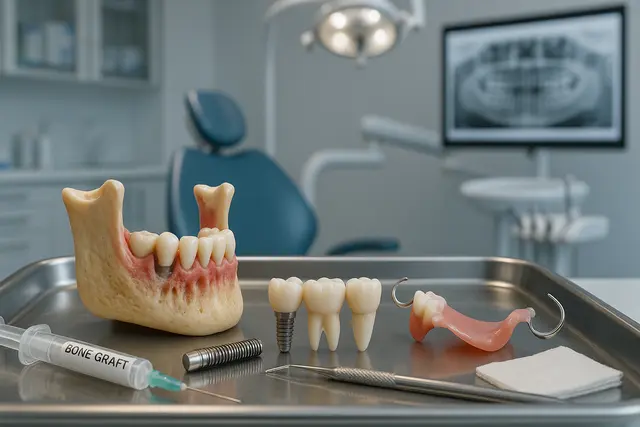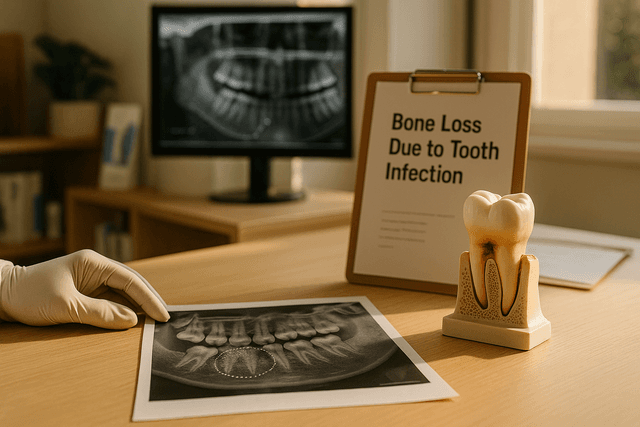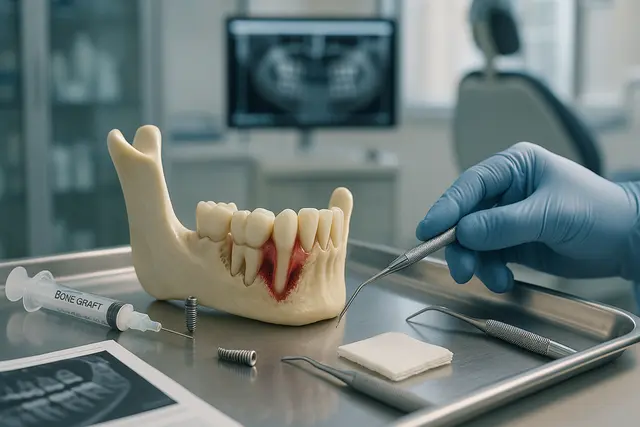Oral Health
4 min read
Sep 08, 2025
What Is Mewing Trend? Origins, Science, and Results
From TikTok tutorials to teen slang, "mewing" has taken over the internet as the latest beauty and wellness craze. But beyond the social media hype, what exactly is mewing, and can it really transform your face or improve your jawline? This curious trend centers on one simple thing: where you rest your tongue.

Let’s start with the basics: what does mewing mean and why is it suddenly plastered all over your teen’s social feed or whispered like ancient wisdom among beauty vloggers? It sounds like a cat thing, but don’t be fooled. The mewing trend has absolutely nothing to do with felines and everything to do with your tongue posture, yes, really.
So if you’ve ever wondered whether pushing your tongue against the roof of your mouth could reshape your face, improve your jawline, or even help with orthodontic issues, you’re not alone. Let’s break down the hype, the origins, the supposed science, and whether mewing might actually do anything.
The Origins of Mewing
The term mewing comes from British orthodontist Dr. John Mew. He developed the concept alongside his son, Dr. Mike Mew, with the idea that proper tongue posture, specifically, resting the tongue on the roof of your mouth, could influence facial structure over time. Dr. Mew believed that modern diets, soft foods, and mouth breathing were wrecking our natural bone development and leading to longer faces, weaker chins, and poor oral health.
Sounds plausible, right? After all, we know that bone growth and muscle development play a big role in how we look. The idea that your daily habits could reshape your jaw isn’t completely wild. But this isn’t your typical orthodontic treatment, it’s a posture method that went from obscure theory to full-blown viral trend thanks to, you guessed it, platforms like TikTok.
The Science (and Hype) Behind Mewing
Here’s where it gets a little murky. Among teens, mewing has become teen slang for working on your looks, especially your jawline. Search “mewing” on TikTok, and you’ll find thousands of videos promising to sculpt your face by simply flattening your tongue to the roof of your mouth all day. It's become the beauty trend equivalent of skipping leg day at the gym, everybody’s doing it for the ‘gram.
But ask a professional, and you’ll get a more grounded take. While mewing might help promote mindfulness around tongue posture and breathing, it’s not a substitute for professional orthodontic care. Especially if you’re dealing with misaligned teeth, bite issues, or more complex orthodontics needs.
Try Mewing or Talk to Your Teen
If your teen suddenly starts talking about how they’re "hard mewing" during homework, don’t panic. Just talk to your teen. Ask where they heard about it, and be open to hearing them out. This TikTok trend might seem silly, but it’s rooted in a desire to feel confident and in control of their facial features. That's not a bad thing.
That said, if they’re skipping their brace checkups because they “don’t need them anymore” thanks to mewing, it’s time to intervene. At family orthodontics practices, we’ve seen kids delay or abandon real treatment plans thinking this trick will fix everything. Spoiler alert: it won’t.
Jawline Trend or Just a Phase?
Everyone’s chasing that chiseled jawline. It’s practically a rite of passage to obsess over your jawlines in selfies. The jawline trend is nothing new. What is new is that now people think they can change theirs by doing what basically amounts to a tongue yoga session.
But here’s the kicker: there’s limited scientific evidence supporting those dramatic before-and-after mewing transformations you see online. Real change in facial structure typically involves years of growth, sometimes guided by orthodontic appliances or even oral and maxillofacial procedures. Not just positioning the tongue a certain way for a few weeks.
Separating Fact From Fiction in Mewing
The meaning of mewing isn't magical. Mewing is a technique rooted in an idea that development influences facial structure, and there's some logic there. But the scientific evidence supporting mewing’s jawline-sculpting promises is still underwhelming.
Yes, mewing might help with things like nasal breathing, improved posture, and maybe some subtle facial toning if done correctly over time. But there’s very little scientific evidence supporting its efficacy when it comes to major cosmetic changes. Claims to reshape your face overnight? That’s not science, that’s the internet doing what it does best: hype.
Why People Still View Mewing as a Trend to Help
Because it’s easy, free, and doesn’t involve scary wires or molds. The idea that simply keeping your tongue to the roof of your mouth could lead to a more symmetrical face or better facial aesthetics is pretty appealing. And let’s face it, when a social media trend blows up, logic doesn’t always come along for the ride.
That’s why it’s important to check in, especially with younger users, about viral mewing claims and make sure they’re not being misled. Because while mewing alone isn’t dangerous, mewing isn’t a miracle either.
What Orthodontics Experts Really Think
At the end of the day, orthodontics experts want what’s best for your bite and your face, both in function and aesthetics. If you’re curious about trying something like mewing, bring it up during your next visit. Ask how tongue posture fits into your overall oral development.
And if you’re a parent, don’t hesitate to talk to your teen about what they’re hearing online. Separating facts from trending myths is part of raising savvy, health-conscious kids these days.
What Is Mewing and Where Did It Come From?
Mewing is a technique that involves pressing the tongue against the roof of the mouth with the idea that it can influence jawline definition and facial structure. The term was introduced by Dr. John Mew, a British orthodontist, and later popularized by his son, Dr. Mike Mew. Their theory suggests that modern habits like eating soft foods and mouth breathing negatively affect jaw development, and proper tongue posture could help counteract this. The concept gained widespread attention when social media platforms like TikTok made it into a viral beauty trend.
Does Mewing Actually Work Scientifically?
While the concept of tongue posture influencing oral development has some logic, scientific evidence for mewing’s dramatic cosmetic claims is limited. There is little peer-reviewed research showing that adults can reshape their jawlines significantly through tongue posture alone. However, orthodontists acknowledge that proper tongue placement may support better breathing, posture, and oral health. For growing children and teens, tongue posture may play a role in facial development, but in adults, changes are usually subtle and not the transformative results often seen online.
Is Mewing Safe to Try at Home?
Mewing is generally considered safe because it simply involves being mindful of where you place your tongue. At worst, it may have no visible effect. At best, it may encourage nasal breathing and reduce strain from mouth breathing or clenching. The potential issue comes when people view mewing as a substitute for orthodontic treatment. Problems like misaligned teeth, severe bite issues, or jaw pain cannot be corrected with mewing alone and require professional care.
Why Is Mewing So Popular Among Teens and Young Adults?
The trend exploded because it’s free, easy, and promises noticeable results without braces, surgery, or cosmetic treatments. For many teens, it also ties into the social media obsession with jawlines and facial aesthetics. Influencers often post “before and after” mewing transformations, even if the changes are due to lighting, angles, or natural growth. This makes it appealing as a form of self-improvement. Parents and professionals should encourage conversations about mewing to ensure it doesn’t replace necessary orthodontic care.
Read Next
Related Posts

Oral Health
Tooth Replacement Options to Prevent Bone Loss
Losing a tooth isn’t just about appearance, it can have a lasting impact on your oral health, jawbone strength, and overall quality of life. When teeth go missing, the jawbone begins to shrink, which can change your bite, your facial structure, and even your confidence. Fortunately, modern dentistry offers several effective solutions to replace missing teeth and prevent further bone loss.
4 min read
Sep 26, 2025

Oral Health
Bone Loss Due to Tooth Infection Explained: What It Means for Your Oral Health
A tooth infection isn’t just about pain, it can quietly damage the tissues around a tooth and even erode the jawbone that supports your smile. This guide explains how infections start, why they can lead to bone loss, the warning signs to watch for, and the treatments that can stop the spread and rebuild lost support.
5 min read
Sep 25, 2025

Oral Health
Understanding Bone Loss in Teeth: Causes and Treatments That Work
Bone loss in teeth is a silent threat that can compromise your smile, facial structure, and overall oral health. While it often goes unnoticed in the early stages, it can lead to serious consequences if left untreated. Understanding what causes dental bone loss, and how to prevent or manage it, is key to maintaining a strong, healthy foundation for your teeth.
5 min read
Sep 25, 2025
Don’t have time to research every dentist around you?
See why 30k+ patients trusted us